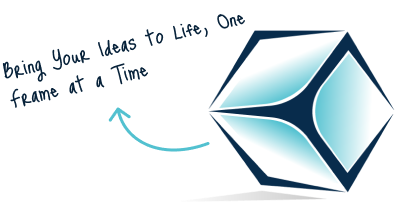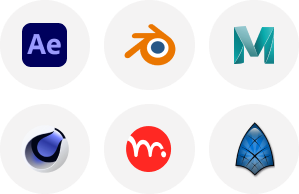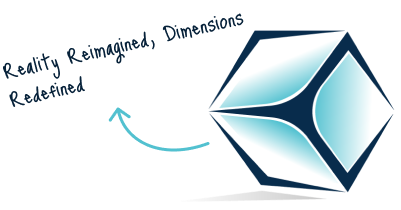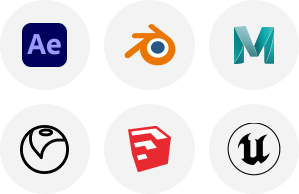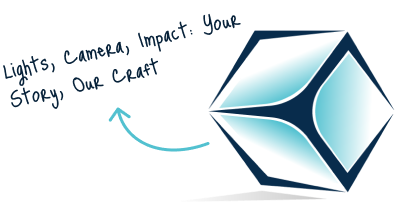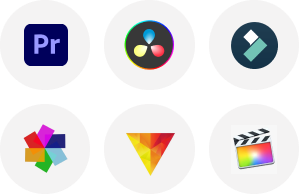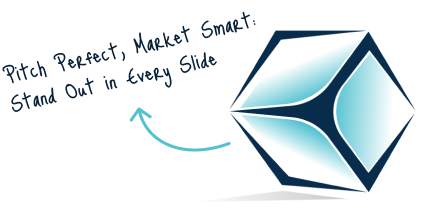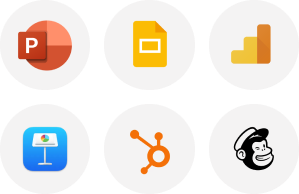3D animation has become an indispensable asset in Medical & health Care advancements, from surgical training and illustrations, patient education and drug discovery, all the way up to drug development and patient drug trials. Looking toward 2025 it seems clear that 3D animation will only continue its rise as health care advances further – yet what does its growth look like, what new developments lie in wait and how will 3D animation change Medical & health Care worldwide in coming years?
We will explore both the present and future of 3D animation in healthcare, exploring its current uses and potential advances – with 2025 projections that may transform medicine forever in mind.
The Evolution of 3D Animation in Healthcare
Starting as an innovative tool to produce detailed medical visuals, 3D animation has quickly become an integral component of medical & health care delivery. From its inception, medical professionals and educators quickly recognized its power for visualizing complex biological structures and procedures while medical education became easier with technological progress. But as time passed and technology evolved further so did the sophistication of these animations as technology advanced further.
So, What is a medical animation? Medical animations were once widely utilized as teaching aids in textbooks and lectures to explain human anatomy, molecular interactions and basic medical concepts. Their key effectiveness lay in showing otherwise invisible processes – like drug/cell interactions or blood circulation in the heart – which were otherwise invisible.
By the mid 2000s, 3D animation had entered clinical practice. Surgeons started to utilize animated simulations before performing surgeries while medical device companies turned to 3D animation to design and explain new technologies. Fast forward to today: today 3D animation stands as a cornerstone in Medical & Health Care video production and healthcare innovation–driving innovations across education, diagnostics, treatment planning, patient communication and research.
The Power of 3D Animation in Medical Education

One of the greatest contributions of 3D animation in Medical & health Care is health-related education. Students and professionals can now explore every inch of human anatomy with virtual dissections and interactive anatomy models providing an engaging educational experience beyond textbooks alone.
- On a similar note let’s briefly discuss What is 3D imaging in healthcare?
3D imaging in healthcare enhances anatomical visualization, improves diagnostics, aids surgical planning, and benefits various medical fields using advanced technologies.
Three dimensional animations provide numerous educational advantages by breaking down complex processes into easily comprehendible segments. For instance, understanding how a circulatory system functions no longer means looking at static images or abstract diagrams alone – students can now witness blood traveling through veins and arteries of their bodies while experiencing its journey firsthand.
As demand rises for interactive learning, 3D animation will be crucial in medical & health care education. By 2025, platforms may rely exclusively on 3D models, AR, and VR technologies, with companies like TVS Cube healthcare video production company leading the way in these advancements.
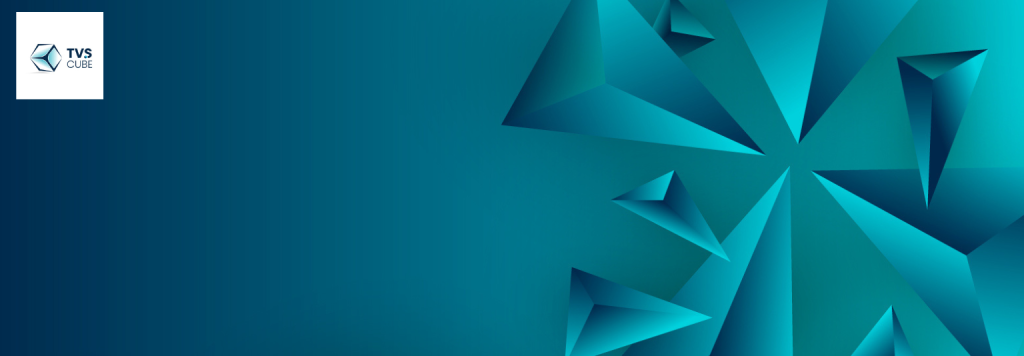
Step into reality with precision and creativity
Browse TVS Cube’s Upwork profile
● 3D Animation in Surgical Planning and Simulation
One of the most notable applications of 3D animation in Medical & Health Care is surgical planning. Surgeons traditionally relied on 2D images such as x-rays or MRI scans for surgical planning of complex surgeries involving organ systems like brain, heart, or spine; these 2D scans may offer useful details but lack enough details for precise planning purposes. 3D animation provides this option and further allows precise planning.
Surgeons now have access to 3D animation technology that enables them to build an accurate model of a patient’s anatomy for analysis purposes. By importing patient data from CT scans or MRIs into medical teams’ models of bodies, surgeons are now able to generate detailed 3D replicas that enable them to examine every angle of an area of interest while zooming in on specific structures for more precise planning of procedures and more precise planning of treatments.
– Medical innovation is poised to advance by 2025.
– 3D surgical planning may become standard practice.
– Surgeons could collaborate remotely using virtual patient models.
– Sharing virtual models helps determine ideal surgical approaches.
– AI/machine learning may predict outcomes and offer recovery advice.
– Focus on enhancing precision and reducing recovery times.
Technology such as this has already proven indispensable during high-risk surgeries. Neurosurgery surgeons, for example, can utilize 3D Medical & health Care animations and simulation platforms to more easily visualize brain structures during complex operations, providing greater insights for informed decisions during complex procedures. Furthermore, virtual practice platforms allow surgeons to practice procedures beforehand in an attempt to reduce risks during live procedures.
● 3D Animation in Patient Communication and Education
Healthcare’s biggest hurdle lies in communication. Patients struggling to grasp complex diagnoses or treatments struggle to fully comprehend what lies in store for them – often leading them to feel anxious, confused and disconnected from the care process. Traditional medical jargon often leaves people bewildered, disengaged from Medical & Health Care provision altogether. Educational video production can play a crucial role in overcoming this barrier by simplifying complex information and fostering better patient understanding.
– By 2025, 3D Medical & health Care animation will enhance patient education.
– Hospitals may combine VR/AR headsets with 3D animation for immersive experiences.
– Patients could use VR headsets for real-time walkthroughs of diagnosis and treatment.
Besides, for additional info, get to know What is VFX in medical terms? VFX in medicine enhances visualizations using CGI to create realistic simulations of biological processes, aiding in education and communication of complex medical information through engaging digital effects.
TVS Cube Medical & health Care animation simplifies complex medical topics, enhancing patient understanding and building trust between healthcare providers and their patients effectively.

Want to get rid of medical concept complexities?
● 3D Animation in Drug Development
Drug development can be an expensive, time-consuming endeavor that often includes extensive trials. Thanks to 3D animation technology, drug developers in the medical & health care sectors can now more efficiently simulate how drugs interact with our bodies at the molecular level instead of depending solely on in vitro testing or animal studies; instead, they use molecular animations as an invaluable visualization tool showing them how drugs affect cells, tissues, and biological structures.
– By 2025, AI and machine learning will enhance 3D animation’s role in pharmaceutical research.
– Sophisticated molecular Medical & health Care animations will improve drug performance predictions during clinical trials.
– 3D printing may facilitate personalized drugs and devices using animated 3D models.
Simulations not only accelerate drug development but also allow for more effective Medical & Health Care video marketing, helping researchers and pharmaceutical companies convey complex processes and findings to both professionals and patients in an accessible way. Researchers can model interactions in 3D space to save both time and resources during drug development.
Top 3 Benefits of 3D Animation in Modernizing Healthcare Communication and Patient Care
3D animation is playing an increasingly vital role in transforming how healthcare professionals communicate with patients. Below are three benefits that make 3D Medical & health Care animation an invaluable tool in patient care and healthcare communication:
- Improved Patient Understanding
Patients often struggle to grasp complex medical conditions or procedures. 3D animations make complex concepts simpler by visualizing what is occurring within their bodies and what treatment options exist for each condition or procedure.
- Enhanced Treatment Explanation
3D visualizations enable doctors to offer detailed explanations of Medical & health Care procedures step-by-step and ensure patients understand them, increasing trust between doctor and patient and leading to smarter decision making.
- Increased Engagement in Health Education
3D animation helps patients engage more fully in their health education. Through interactive models and animated videos, patients are given an opportunity to investigate their conditions or treatment options at their own pace and make more informed choices regarding their care.

Educate medical processes with TVS Cube 3D animation
What are Top 8 Best Medical Animation Software [Free & Paid]
Do you know what is the most used 3D animation software? Well, it’s Autodesk Maya – a leading 3D animation software, renowned for its comprehensive tools, flexibility, precision, and industry applications in film, gaming, and medical animation.
Have a look on the table showcasing “Top 8 Best Medical Animation Software”
| Software | Type | Description |
| Adobe After Effects | 2D | Popular for 2D motion graphics and medical animations with 2D elements. |
| Moho Animation | 2D | Ideal for simple 2D medical animations without 3D complexity. |
| Toon Boom Harmony | 2D | Leading 2D animation software for flexible medical illustrations and animations. |
| Pencil2D | 2D (Free) | Free, open-source 2D animation software for basic medical animations. |
| Maya | 3D | Industry-standard 3D software for realistic medical animations, modeling, and rendering. |
| Blender | 3D (Free) | Free, open-source 3D software with robust features for modeling, texturing, and rendering. |
| Akeytsu | 3D | User-friendly 3D animation tool for medical character rigging and animation. |
| Cinema 4D | 3D | Easy-to-use 3D software for motion graphics and medical animations with 3D simulations. |
Why TVS Cube Leads in 3D Animation for Medical & Healthcare Sectors
TVS Cube stands out as an excellent choice for 3D animation in the Medical & Health Care industry, especially for small business owners, due to several key factors that address both the unique needs of the medical field and the constraints of smaller enterprises. Here’s why TVS Cube is a solid choice:
1. Cost-Effective for Small Businesses
For small businesses in the medical & healthcare sector, budget constraints are often a key challenge. TVS Cube provides high-quality 3D Medical & health Care animation at a more affordable price than some of the industry-leading alternatives. Small business owners can produce professional animations for training, marketing, and patient education without needing to invest heavily in expensive software. This makes it a viable option for clinics, medical startups, and health product manufacturers that need to stay within their budget.
2. User-Friendly Interface for Non-Experts
In the medical field, professionals often do not have technical animation expertise. TVS Cube’s intuitive and easy-to-use interface enables small healthcare businesses to create detailed animations without requiring a steep learning curve. This means small business owners, such as healthcare providers or medical device manufacturers, can produce engaging content for medical presentations, demonstrations, and patient communication without needing specialized animation skills.
3. High-Quality Visualization for Medical Applications
TVS Cube is equipped with powerful features that allow for high-quality 3D visualizations, which are essential in the medical and healthcare industry. Whether it’s creating medical simulations, illustrating complex medical procedures, or showcasing healthcare products, TVS Cube Medical & health Care animations in Delware can generate clear, accurate, and visually appealing animations that aid in better patient understanding and more effective communication with healthcare professionals.
4. Medical & Healthcare-Specific Tools
TVS Cube offers tools that are tailored for creating content that can be specifically applied to medical & health care environments. This includes precise anatomical models, medical equipment design visualizations, and surgical procedure animations. Small businesses in healthcare, from private clinics to health tech startups, can use TVS Cube to demonstrate their medical solutions in ways that resonate with patients and medical professionals alike.

5. Efficient Workflow for Time-Sensitive Projects
In Medical & health Care, timelines are often critical, whether it’s for medical product launches, patient education campaigns, or training materials. TVS Cube offers an efficient workflow, allowing small businesses to quickly produce and modify animations as needed. This flexibility ensures that small healthcare businesses can meet tight deadlines without compromising quality, which is particularly valuable for marketing purposes and creating timely educational content.
6. Versatility for Different Medical Applications
Whether creating 3D animations for medical education, illustrating anatomical concepts, simulating medical procedures, or showcasing healthcare devices, TVS Cube can cater to a broad spectrum of needs. Small healthcare businesses, such as medical practitioners, clinics, and health tech startups, can use the platform to visualize various aspects of their services or products in engaging, easy-to-understand animations.
7. Supports Collaboration and Customization
For small medical businesses, collaboration is key, whether it’s between doctors, health professionals, or marketing teams. TVS Cube allows for easy sharing and collaboration on projects, enabling teams to work together on creating Medical & health Care animations for training modules or patient education resources. Additionally, the software provides flexibility for customization to meet the specific branding or technical needs of small healthcare enterprises.

Make Waves – Enhance your Medical Animation concepts
How Does 3D Animation Help in the Visualization of Complex Medical Procedures?
Starting from a quick look on What is visualization in healthcare? Basically, visualization in healthcare employs graphics, 3D models, and visual tools to clarify medical data and processes, aiding diagnosis, treatment planning, patient education, and medical training.
Complex medical procedures often involve multiple steps, intricate techniques, and an understanding of internal anatomy that can be challenging to explain with traditional methods in medical & health care. This is where 3D animation comes in, offering incredible benefits in visualizing these procedures.
- Clear, Step-by-Step Visualization
Clear Step-by-Step Visualization 3D animation can provide clear step-by-step visualization for even the most complicated processes, be they surgical procedures, diagnostic processes or medical device mechanisms. Medical & health Care Animation helps professionals and patients alike fully comprehend every phase of the procedure in detail ensuring both professionals and patients alike fully grasp its implications.
- Improved Precision and Planning
Surgeons and medical professionals using 3D animations as preoperative planning aid can use 3D simulations of procedures before performing them in an operating room to more precisely plan interventions, anticipate potential complication risks and increase success of procedures.
- Interactive Learning and Education
Medical students utilizing 3D animation have interactive tools at their disposal that enable them to explore a procedure from all sides, zoom in on key parts, and observe it live – an experience which deepens both understanding and retention of material presented.
Top 3 Ways 3D Animation Is Changing Medical Training and Simulation
The integration of 3D animation in medical & health care training and simulation is revolutionizing the way healthcare professionals learn and prepare for real-world challenges. Here are three significant ways it is making a difference:
- Enhanced Realism and Accuracy
Enhance Realism and Accuracy 3D animation adds life-like, interactive models to medical training with highly detailed simulations of human anatomy, organs and tissues. Trainees can explore their bodies more deeply by way of 3D models than with traditional methods could allow, further expanding their understanding of complex biological systems.
- Safe, Risk-Free Practice
Practice without Real-World Consequences One of the primary attractions of 3D animation for medical professionals is its ability to enable safe, risk-free practice sessions before undertaking surgeries or emergency responses on patients, significantly decreasing errors.
- Instant Feedback and Iterative Learning
With 3D Medical & health Care animation, learners can receive instantaneous feedback during simulations for real-time improvement without incurring costly resources or equipment fees. This real-time interaction encourages continuous development by offering repetitive practice without incurring costs associated with resources and equipment purchases.

Look nowhere else – we got your back!
The Future of 3D Animation in Medical & Healthcare: Predictions for 2025
So, what can we expect for 2025 in medical & health care? With the rapid advancements in technology and the growing reliance on 3D models in healthcare, the future looks incredibly promising. Here are a few key predictions for 2025:
- Widespread Use of Virtual Reality and Augmented Reality in Healthcare Education:
By 2025, VR and AR technologies may take over medical education as primary teaching tools. Students could utilize VR headsets to explore 3D anatomical models while AR could help surgeons visualize organs during live surgeries by superimposing 3D models onto patient bodies during live surgery procedures.
- Enhanced Patient-Doctor Communication:
3D Medical & health Care visualization will play an integral part of patient education, helping doctors explain complex medical concepts with greater ease and clarity. We may even witness doctors using VR technology to guide patients through surgeries or treatments more interactively – making for a far more engaging experience!
- AI-Powered 3D Models for Personalized Medicine:
By 2025, 3D animation combined with artificial intelligence (AI) and machine learning could become mainstream medicine, with doctors creating personalized treatment plans based on 3D models of their patient’s body that take into account specific genetic, environmental and lifestyle considerations.

- Increased Use of 3D Printing:
3D printing has already made waves in healthcare, from creating prosthetics and replicating organs for transplant. By 2025, however, we may see these printers used more broadly for custom medical implants or personalized drugs based on three dimensional models of patient anatomy.
- More Immersive and Interactive Patient Education Tools:
VR, AR and 3D animation technology will create more engaging patient education tools than ever. Patients will have the power to step into virtual worlds to better comprehend their diagnosis and treatment options for better clarity on the journey to healthcare.
The End Note – Medical & health Care
As we move closer to 2025, the potential for 3D animation in medical & health care is limitless. From revolutionizing medical education and surgical planning to enhancing patient communication and drug development, 3D animation is poised to change the way healthcare operates at every level.
The future of healthcare is evolving through 3D animation, AI, VR, AR, and more. TVS Cube stands out as an affordable, user-friendly tool for small medical businesses, aiding professionals in creating educational content and improving communication, ultimately enhancing understanding and outcomes in medical & health care.
FAQ’s:
How is 3D animation used in medicine?
3D animation in medicine visualizes complex processes, aiding professionals in understanding conditions and surgeries. It’s also valuable for education, patient communication, marketing, and training simulations.
What is a medical animation?
A medical animation visually represents complex medical information using 3D animation and digital effects, aiding education in medical schools, hospitals, and pharmaceutical companies for clear understanding.
Which software is best for medical animation?
The ideal software for medical animation varies with project needs; options include Autodesk Maya for detailed 3D, Blender as a free alternative, and Adobe After Effects for simpler 2D work.
How is 3D modelling used in medicine?
3D modeling is vital in medicine, aiding in accurate representations of anatomy, surgical planning, device development, and education, reducing surgical errors and enhancing patient understanding of complex concepts.
How is animation used in the medical field?
Animation in medicine aids education and training by visually explaining complex biological processes, demonstrating surgical procedures, marketing treatments, and enhancing understanding of rare conditions for informed decision-making.









